7 Remote Work Myths and Facts: Is it Right for Your Business?
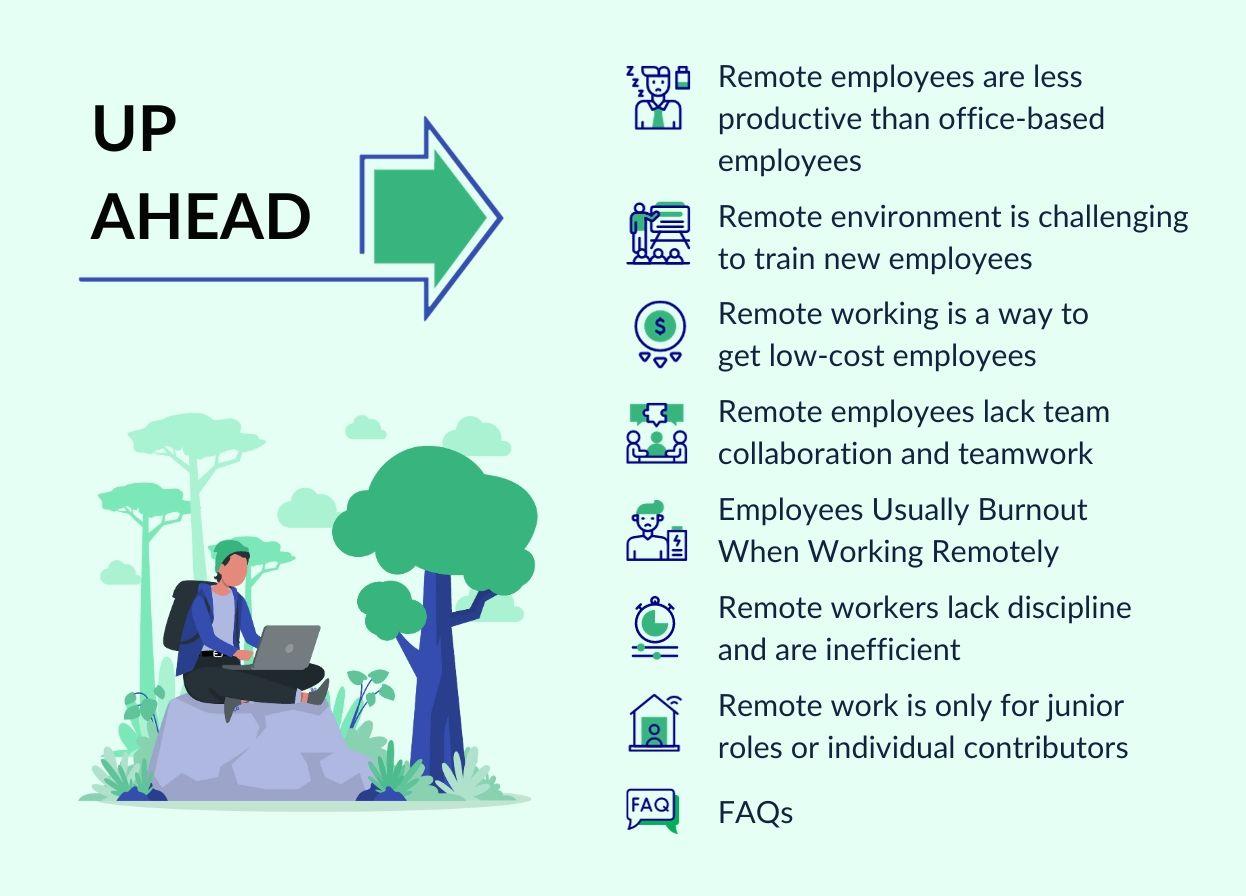

The pandemic has mostly been stamped out, and corporations have moved to end remote working.
Initially championed as a game-changing "new normal" that revealed a business’ resilience, everyone from Elon Musk to OpenAI’s CEO Sam Altman bashed remote work recently.
The reality of remote working is multifaceted. On one hand, it reduces costs and time spent in office spaces, commuting, and relocation, improving work-life balance (even twice as much as in-office employees).
On the other hand, it reduces in-the-moment creativity that physical workplaces facilitate. Moreover, people believe that an in-person team fosters better company culture–an indefinable quality over 60% of U.S. employees rated as more vital than their pay.
While everyone has their perception and arguments about remote work, here’s a compiled list of 7 remote working myths and realities to help you make a more informed choice on whether it is right for your company.
Myth #1: Remote employees are less productive than office-based employees
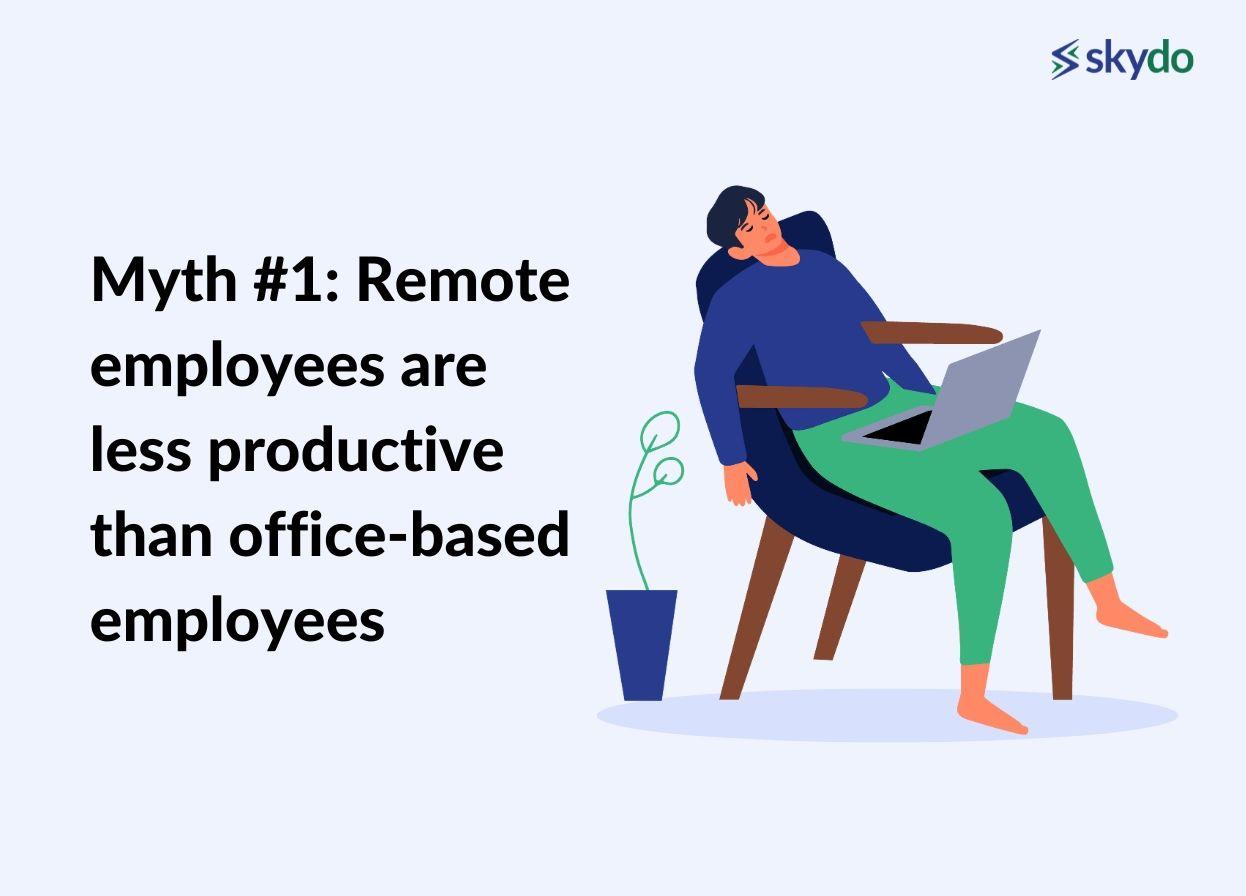
Reality: Remote workers often show to be equally or more productive
Contrary to common belief, remote work has proven to boost productivity significantly. Many studies reveal that remote workers reported 13% higher productivity than office workers.
While this might sound like one of many remote working myths, it's the truth. With no time wasted on commutes and the freedom to personalise their workspaces and working styles, remote employees can focus better on their tasks–especially in creative professions. Additionally, since people can choose their ideal working hours, they can tap into their peak productivity times, leading to faster project completions and overall efficiency.
To dive deeper into effective remote working practices and enhance your work-from-home experience, check out these proven techniques for successful remote work.
Consider Drift, a sales and marketing software company that shifted to remote work during the pandemic. Initially sceptical, they soon witnessed a remarkable uptick in their team's productivity. Employees could work when they felt most inspired, resulting in creative campaigns delivered ahead of schedule.
Myth #2: Remote environment is challenging to train new employees
Reality: Improving team spirit can be difficult when you cannot meet with your team in person
Remote onboarding is a unique challenge, but it can be as effective as in-person training with the right approach.
- Building a feeling of community for new remote hires from the get-go is crucial for a smooth onboarding process.
- Businesses can eliminate the geographical barrier to face-to-face communication by using video conferencing capabilities. New employees can get to know their coworkers, supervisors, and the organisation through this method.
- Interactive seminars and training sessions keep remote workers interested and engaged during onboarding. They can participate actively and learn more from interactive exercises, small-group conversations, and digital simulations.
- Moreover, by offering thorough onboarding materials, you provide remote workers with the independence and confidence they need to do their jobs well and independently.
Myth #3: Remote working is a way to get low-cost employees
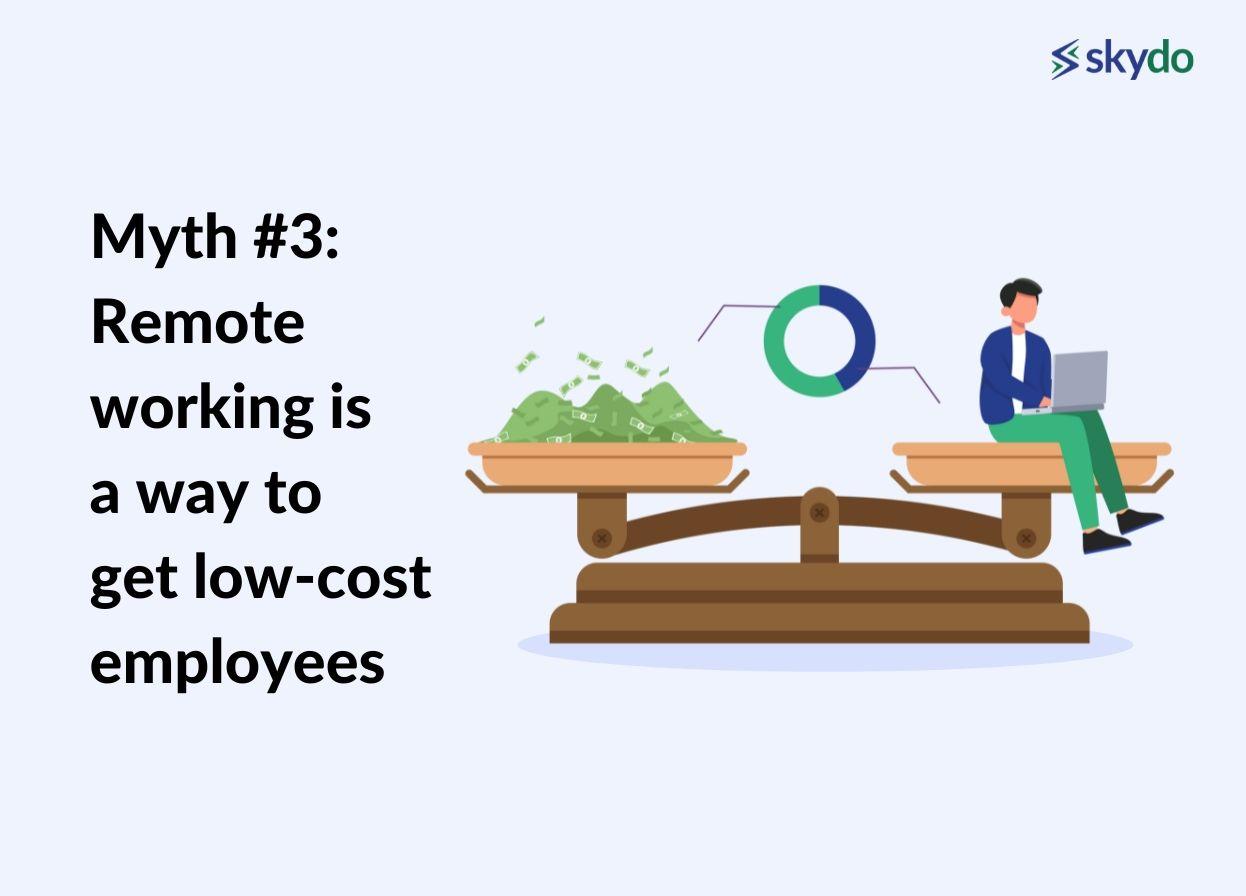
Reality: Remote working is never for finding a low-cost substitute
Remote work is about tapping into a global talent pool and finding the best fit for your company, regardless of geographical boundaries. You might discover your next web developer in Singapore, or a brilliant graphic designer could be waiting to join your team from Brazil.
By embracing remote work, companies can access specialised skills that might be scarce in their local area. It's not about cutting costs but investing in top-tier talent that can drive innovation and propel the business forward.
Additionally, remote work allows employees to work in an environment that suits them best, fostering higher job satisfaction and overall well-being.
Myth #4: Remote employees lack team collaboration and teamwork
Reality: Remote workers can foster team collaboration through routines and technology
While face-to-face interactions have merits, remote teams have found innovative ways to collaborate effectively.
For instance, remote teams might implement a routine of virtual team-building through daily stand-up meetings, where team members share updates and discuss challenges. This practice ensures everyone is on the same page and helps identify potential roadblocks early on.
Remote teams leverage tools like Slack, Microsoft Teams, and Zoom to facilitate real-time communication and team collaboration. These platforms enable instant messaging, video conferencing, and screen sharing, empowering team members to work together as if they were in the same office.
Additionally, virtual team-building activities are gaining popularity. Through online games like a virtual escape room challenge or a collaborative online puzzle, remote employees bond and build camaraderie.
Project management platforms like Basecamp, Trello or Asana further enhance remote team collaboration. These tools enable seamless task allocation, progress tracking, and easy file sharing, ensuring everyone stays organised and informed.
Myth #5: Employees Usually Burnout When Working Remotely
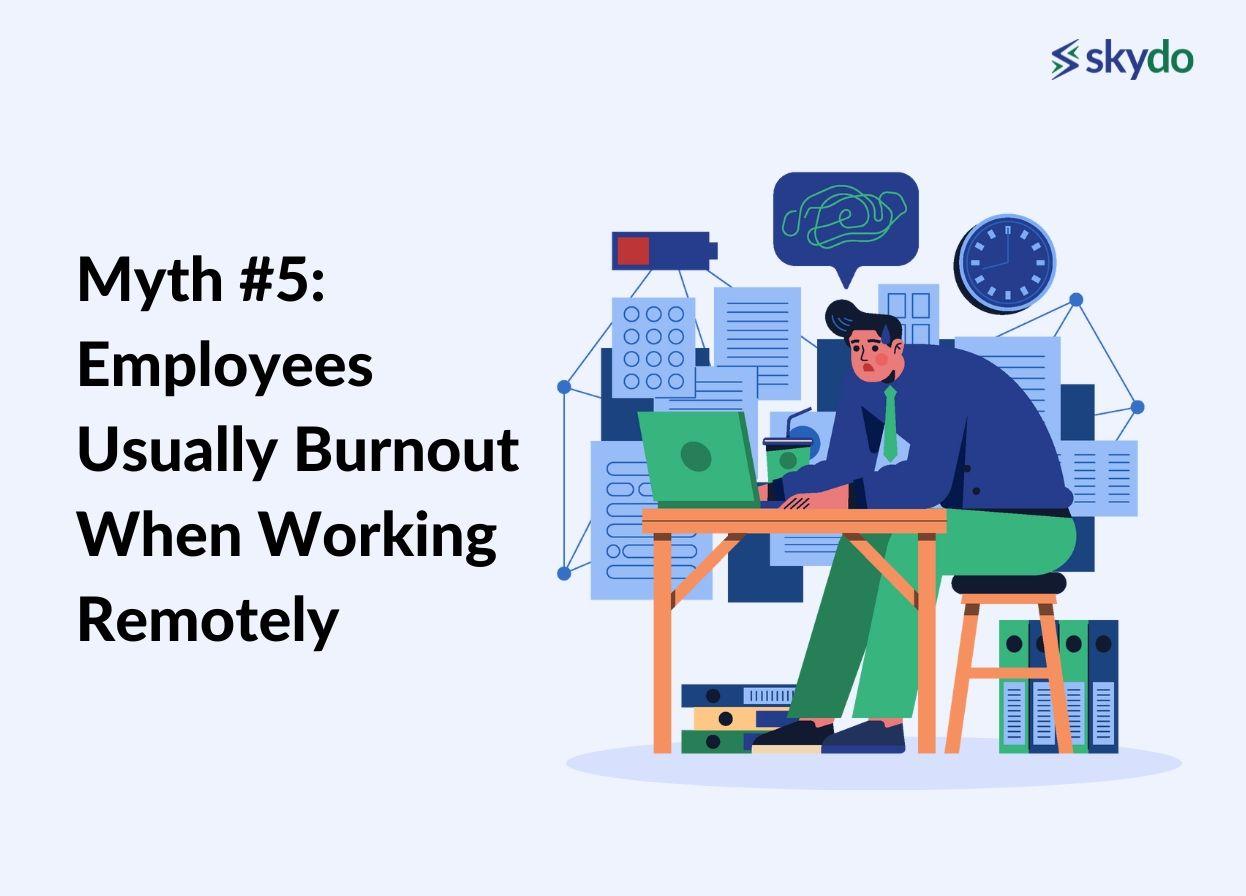
Reality: Yes, remote work can lead to burnout.
Remote work companies' employees have a greater risk of burnout than in-person teams because it's more challenging to detect.
When you work from home, there are often blurred or no boundaries between your working hours and personal time, especially without a dedicated working space.
Remote workers might find it challenging to switch off from work mentally without the clear distinction of physically leaving the office. Emails and notifications from work can creep into their time, leading to prolonged working hours and an inability to disconnect.
Additionally, remote workers may feel the constant pressure to be available and responsive, fearing their superiors will question their commitment if they set clear boundaries. This "always-on" mentality can lead to chronic stress and exhaustion, precursors to burnout.
In a traditional office setting, supervisors and colleagues can easily notice signs of burnout, such as physical fatigue or emotional exhaustion. However, when employees work remotely, these signals may stay unnoticed, making it challenging for employers to intervene and provide support.
To address this issue–
- Companies must encourage open communication about work-life balance and prioritise employee well-being.
- Setting clear expectations for working hours and implementing "no work after hours" policies can help remote workers maintain a healthy balance.
- Providing access to mental health resources and promoting regular breaks.
Myth #6: Remote workers lack discipline and are inefficient
Reality: Remote workers can establish efficiency and effective routines
The efficiency of remote work hinges on various critical factors contributing to a productive and cohesive remote work environment.
- Role Clarity: When roles are unambiguous, remote workers can focus on their designated responsibilities, avoiding confusion and overlapping efforts.
- Supportive Company Culture: When a company fosters remote-friendly team collaboration, it creates an environment where remote employees feel included, valued, and empowered to contribute their best.
- Senior Role Modeling: When senior employees and managers model effective remote work practices, it sets the tone for the rest of the organisation. Leading by example, they demonstrate accountability, communication, and productivity in the remote work context.
- Well-Defined Goals: Specific, measurable, achievable, relevant, and time-bound (SMART) goals help remote workers stay focused and aligned with the company's vision.
Myth #7: Remote work is only for junior roles or individual contributors
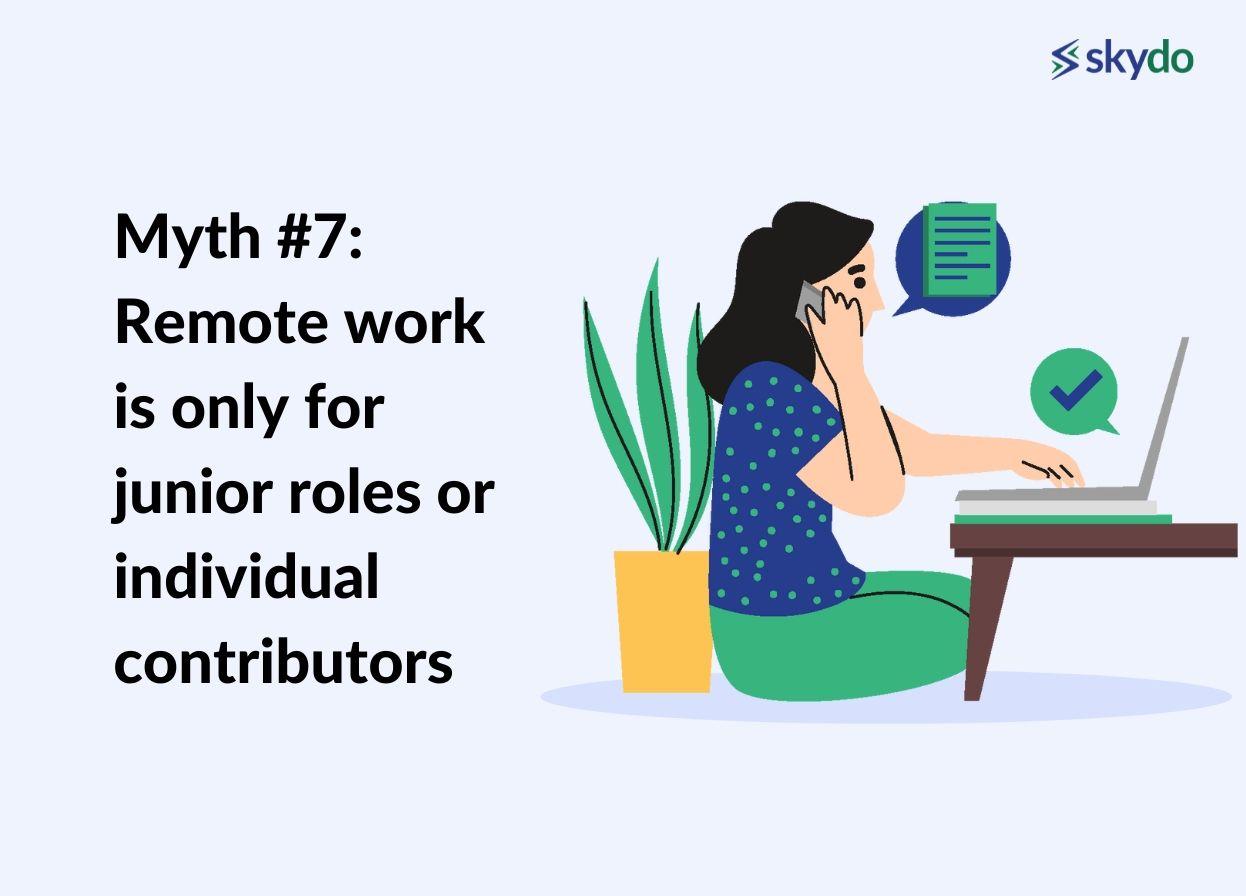
Reality: Remote work is best suited for roles where dependencies are minimal
Remote work is perfect for various roles, not just junior ones. Any job that relies less on physical presence and more on individual effort can thrive in a remote setup.
Consider a software development team. Programmers can collaborate effectively using virtual tools, writing code, and conducting code reviews from different locations.
The result? High-quality software delivered seamlessly, all while working remotely.
With virtual team building and resource access, writers and designers can work efficiently without being tied to a specific office space.
Data analysts are no exception. They can crunch numbers, analyse data, and create reports without being physically present in the office.
The Final Word
Remote work can be a rollercoaster ride, offering both challenges and rewards. On the positive side, remote work grants employees flexibility, virtual team-building and better work-life balance. Commutes vanish, and personalised workspaces enhance focus.
However, blurred boundaries between work and personal life can lead to burnout. Communication might suffer, impacting team cohesion. Some roles demand in-person collaboration that remote work can only partially replace.
Bill Gates, in a podcast, shed light on this topic, “In the pre-pandemic business world, people worried that a virtual meeting would offend a client. But, in a post-pandemic world, people will have second thoughts about the necessity of physical meetings.”
Companies can allow employees to work remotely for certain days of the week while coming into the office on other days. This way, employees can enjoy the flexibility and work-life balance of remote work while also benefiting from face-to-face interactions and team bonding in the office.
Additionally, leveraging technology and virtual team-building activities can help bridge the gap between remote and in-office employees, fostering camaraderie and teamwork.
FAQs
Q1. What does remote work mean?
Ans: Remote work refers to the practice of performing one's job duties from a location outside of the traditional office environment, often using technology to stay connected.
Q2. How has the widespread shift to remote work caused businesses to reconsider their way of working?
Ans: The widespread shift to remote work has prompted businesses to reassess traditional work models, embracing flexibility and digital tools to adapt to changing work dynamics and employee needs.
Q3. What is hybrid remote work?
Ans: Hybrid remote work combines both in-office and remote work, allowing employees to split their time between working at a physical office and from a remote location.
Q4. How do you work with remote teams?
Ans: To work effectively with remote teams, communication is key. Use collaboration tools, establish clear expectations and maintain regular check-ins to foster a sense of connection and productivity.
Q5. What is remote hybrid work?
Ans: Remote hybrid work is a flexible work model that combines remote work and in-office work, allowing employees to choose where they work based on their preferences and job requirements.
Q6. What is the difference between remote and work from home?
Ans: Remote work broadly encompasses any work done outside the traditional office, while work from home specifically refers to working from one's residence.
Q7. How does remote work affect productivity?
Ans: Remote work can impact productivity positively by providing flexibility and reducing commuting time, but challenges like isolation and potential distractions may need to be addressed to maintain optimal productivity levels.












